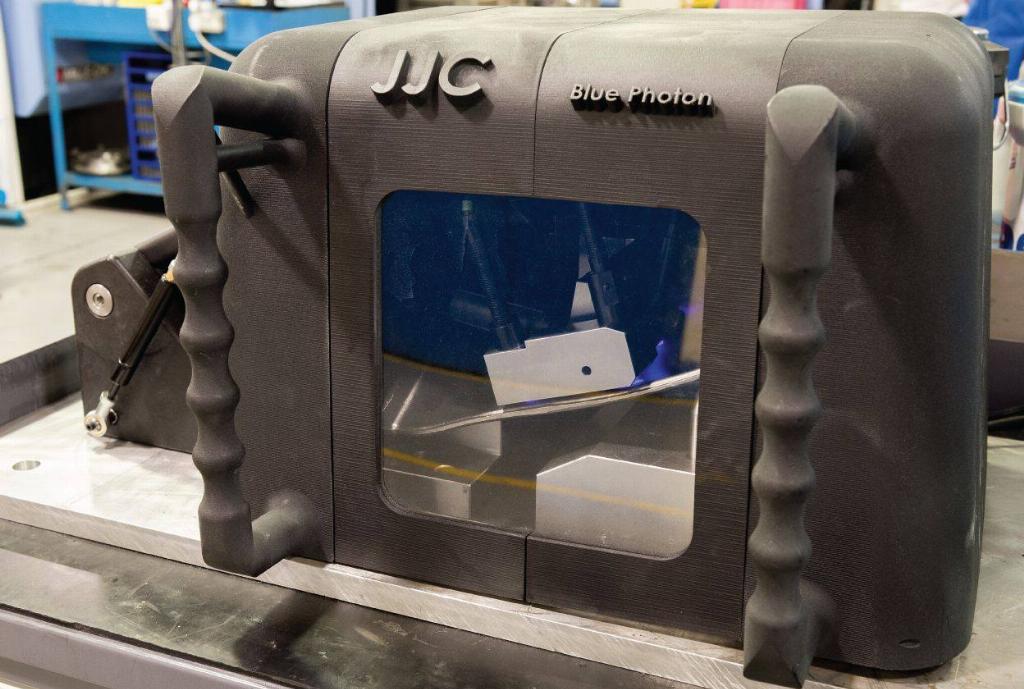Never stand still

From supporting Spitfire fighter aircraft manufacturing, to the latest aero engines for civil and military applications, JJ Churchill continues to work hard and grow as an emerging giant in the aerospace industry.
Spitfire, Eurofighter and onto the most modern aircraft, Leicestershire‐based JJ Churchill has a wealth of heritage, and it’s not resting on its laurels. The company will be announcing a £100 million partnership with two giants of the aviation engine industry at Farnborough 2018. These contracts have been secured thanks to the company’s continuing growth on technical excellence and capability.
JJ Churchill is focused on solving product challenges which require a high degree of technical and organisational skill to resolve. In particular, within areas which require highly-skilled engineering in difficult geometries, difficult dimensions and challenging materials.
To achieve this, it continues to invest heavily in the latest technology. For example, in the past year it has developed expertise within additive layer manufacturing (3D printing) with huge success. Typically, and in support of one specific OEM from the aerospace sector, reducing the time to prepare fixtures in its CMM quality inspection process, leading to a considerable reduction in actual manufacturing costs.
On this occasion, the fixture was needed to hold the components in the most effective orientation for the CMM. It needed to deliver repeatable precision loading and ease of use. Usually a fixture could only be manufactured once the components have already been machined. This process typically takes two weeks. JJ Churchill designed and delivered a working fixture in three days.
The company has also introduced innovative fixing technology, Blue Photon, to decrease its tooling costs further with a 50% reduction in the number of machining operations on a specific critical part for another OEM.
This technology is applied to a titanium aluminide aerofoil blade component, which is an extremely difficult material to fixture and machine. This photo-activated adhesive workholding system fixes the component to the tool with an adhesive, which when cured under UV light supports the most rigorous machining techniques including 5‐axis CNC.
Each machining operation may need its own fixturing so any reduction in the number of operations will have a huge impact on the efficiency of the process. The reductions in machining operations are achieved by fixing onto a single face of the component, as opposed to potentially many‐faced attachments. Locating on a single face provides access to other faces, enabling several complex features to be machined at the same time, reducing the amount of metal wasted/scrapped as well as time and cost.
The impact of these innovations on JJ Churchill’s overall production is to increase capacity, an essential element as the company continues its high growth trajectory, while also benefitting the environment, another of JJ Churchill’s key performance measures.
Agility meets productivity

Andrew Churchill, the company’s executive chairman, explains the importance of innovation to the company: “By constantly applying emerging technologies to component manufacturing and inspection techniques, we fundamentally increase our agility as a business to meet our customers new product introduction timescales, whilst at the time reducing costs. These technologies lead us to analyse problems in novel ways.”
As well as new technologies, the company is also investing in the latest machining centres. It has seven Makino Viper grinding centres which have been positioned to accept automated loading and supporting CMM processes.
All in all, in the past year the company has invested £2.3m in these technologies as well as new people and new systems to meet the demand from existing and new customers particularly in the aerospace industry. It has also reorganised and restructured to give an absolute focus to the aerospace, gas turbine and diesel engine industries to reflect the different demands of these important industries, supporting the growth challenges ahead.
And again, it is not standing still, with ambitious plans to grow – aiming to triple turnover in the next three years ‐ and expand capacity and capability, which means more new people, more new technology and an increase in factory space of over 50%. Mark Cooper, the company’s managing director explains: “In the aerospace industry, you can’t stand still. And that suits the culture and vision of JJ Churchill down to the ground. We are always looking for more efficient ways of working, so that we can continue to meet the growing demands of the industry. We have increased our headcount by 30% in the past three years and are actively involved in developing the engineers of the future with a proactive apprenticeship training programme.”
Grow your own talent
This approach to people has been strongly endorsed by Ann Watson, chief executive of Semta: “JJ Churchill is a shining example of a company doing exactly the right thing. We’ve got a big skills gap in the UK – we need two million more engineers by 2025 – and apprenticeships are an extremely cost-effective way for organisations of all sizes to futureproof their business by growing their own talent.”

Celebrating 80 years in business, the company was formed by Walter Churchill on Christmas day 1937, just before World War 2. Walter was a Spitfire and Hurricane pilot during the war and also provided machining to Frank Whittle when he was developing the jet engine.
The Churchill family still own the business and Walter’s son James is president and his grandson, Andrew is executive chairman. JJ Churchill employs 150 people, most of whom have come through its apprenticeship programme. Andrew Churchill recognises the importance of this team.
“We couldn’t have been so successful for the past eight decades without the hundreds of apprentices who’ve come through our doors and gone on to be great engineers. Most are local – we’re part of the community in Leicestershire and we’re proud that we could invest in the region and give people a great career in engineering.
“We could bring people in with the skills already but giving younger people those opportunities instead is important to us. We train the best engineers and they stay with us, meaning we can plan for the long-term.”
And with that approach and culture, who wouldn’t bet on JJ Churchill being around for another 80 years, and itself becoming a giant in the industry.













